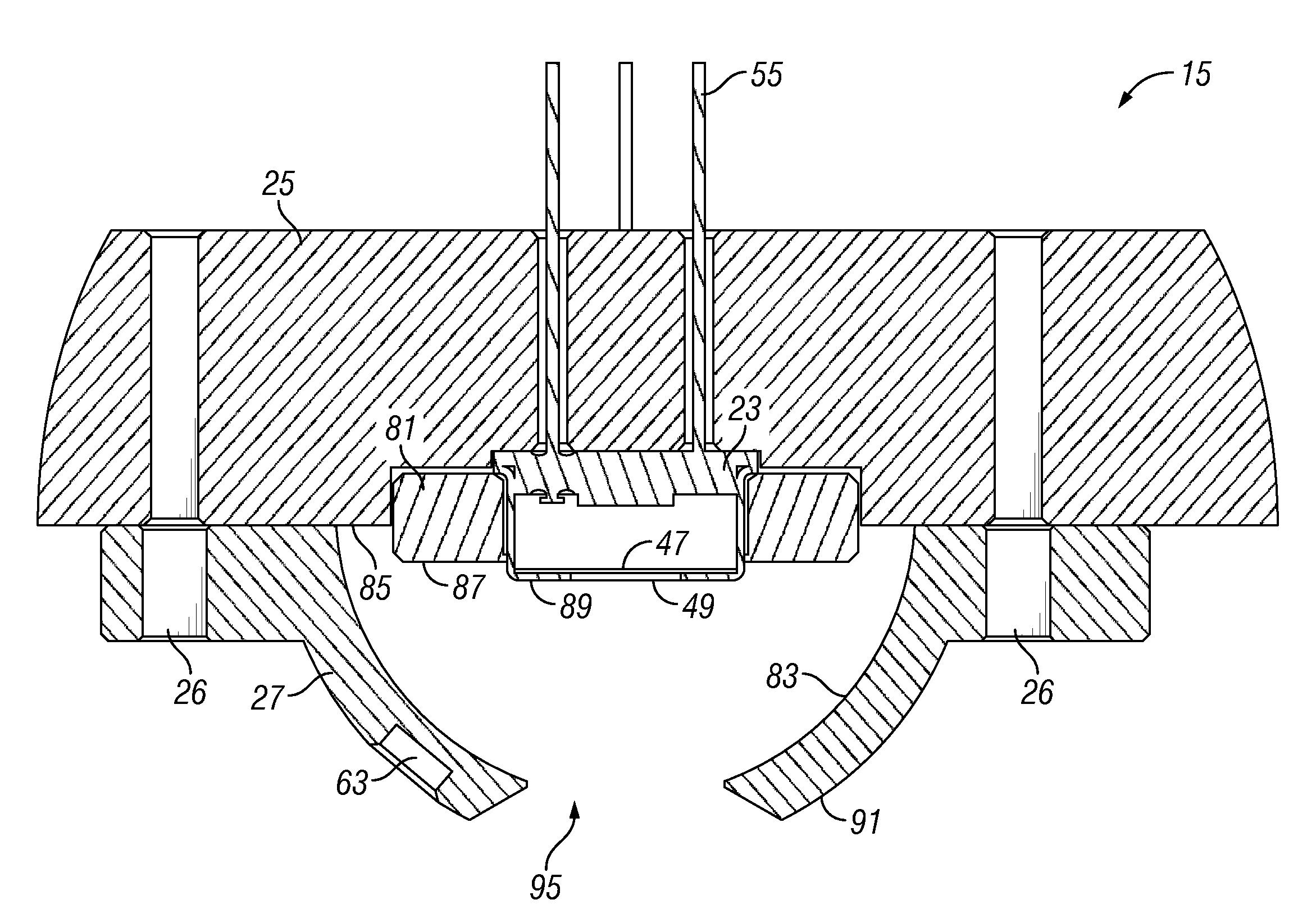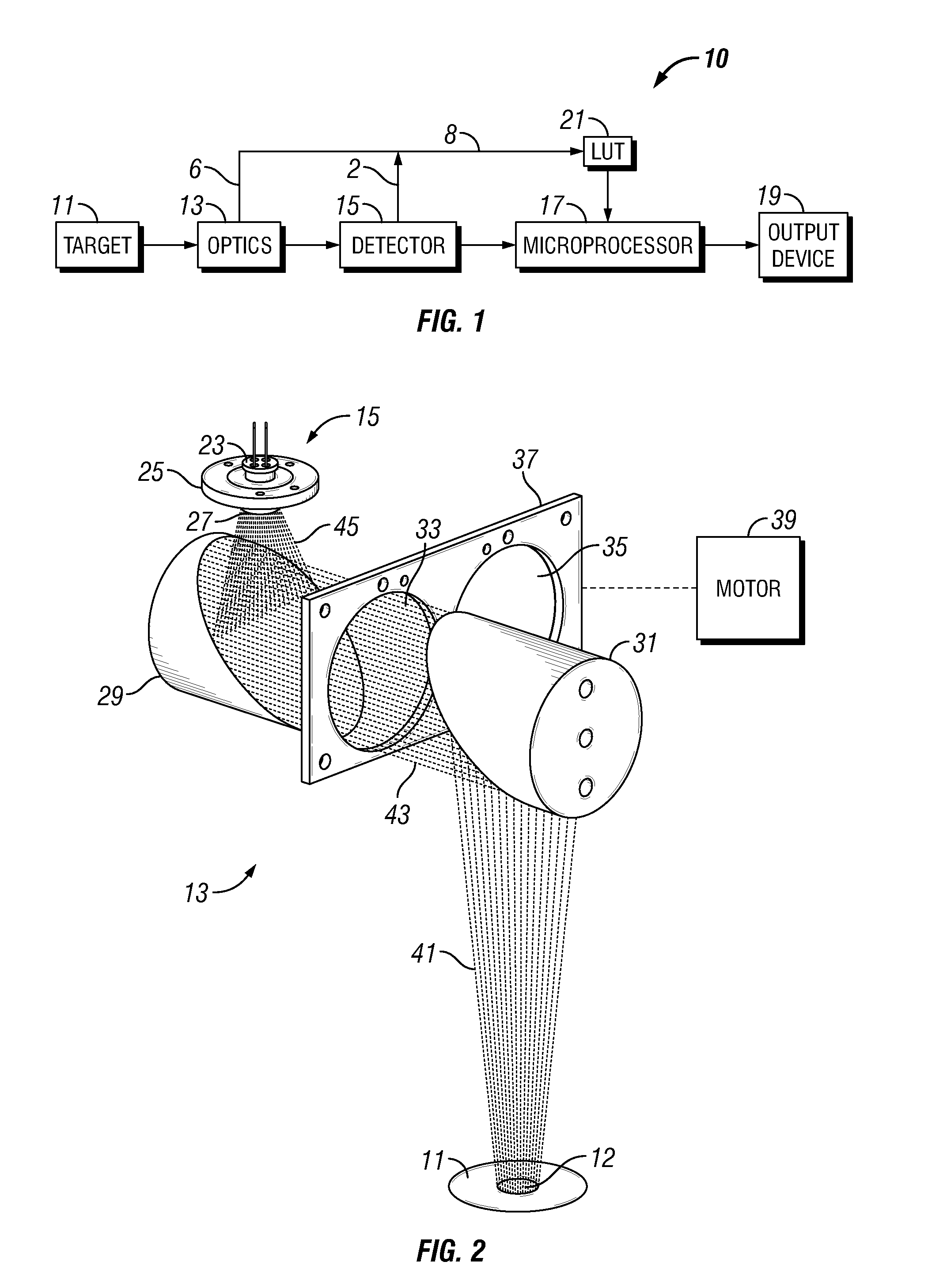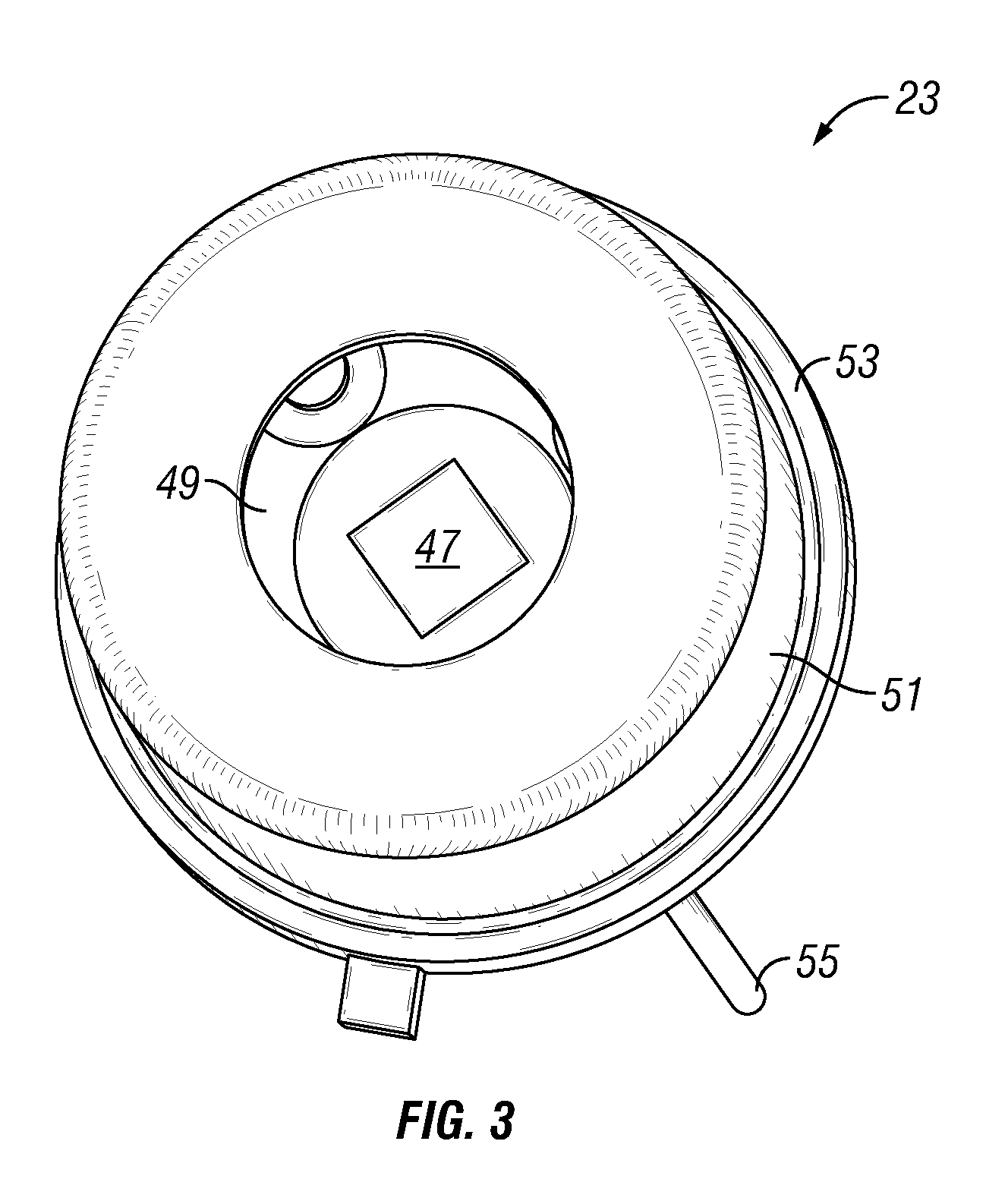Apparatus and method for non-invasive measurement of a substance within a body
- Summary
- Abstract
- Description
- Claims
- Application Information
AI Technical Summary
Benefits of technology
Problems solved by technology
Method used
Image
Examples
Embodiment Construction
[0021]One or more illustrative embodiments are described below. Not all features of an actual implementation are necessarily described or shown for the sake of clarity.
[0022]Referring now to FIG. 1, a block diagram of a system 10 for the non-invasive measurement of the concentration of a substance in a body is shown. Infrared (“IR”) radiation emitted or reflected from the surface of a body 11 is collected and collimated by optics subsystem 13 and focused on IR detector assembly 15. The body 11 is the source of the IR radiation being measured by the system 10. The body 11 is typically a portion of a surface of a body of interest, such as a human body, for example. The optical subsystem 13 includes at least two changeable filters 33, 35, as shown in FIG. 2, that allow two different wavelength bandwidth signals, the first including a characteristic wavelength of a desired substance, such as glucose, for example, to be measured, the second being a portion of the emitted radiation not in...
PUM
 Login to View More
Login to View More Abstract
Description
Claims
Application Information
 Login to View More
Login to View More - R&D
- Intellectual Property
- Life Sciences
- Materials
- Tech Scout
- Unparalleled Data Quality
- Higher Quality Content
- 60% Fewer Hallucinations
Browse by: Latest US Patents, China's latest patents, Technical Efficacy Thesaurus, Application Domain, Technology Topic, Popular Technical Reports.
© 2025 PatSnap. All rights reserved.Legal|Privacy policy|Modern Slavery Act Transparency Statement|Sitemap|About US| Contact US: help@patsnap.com



